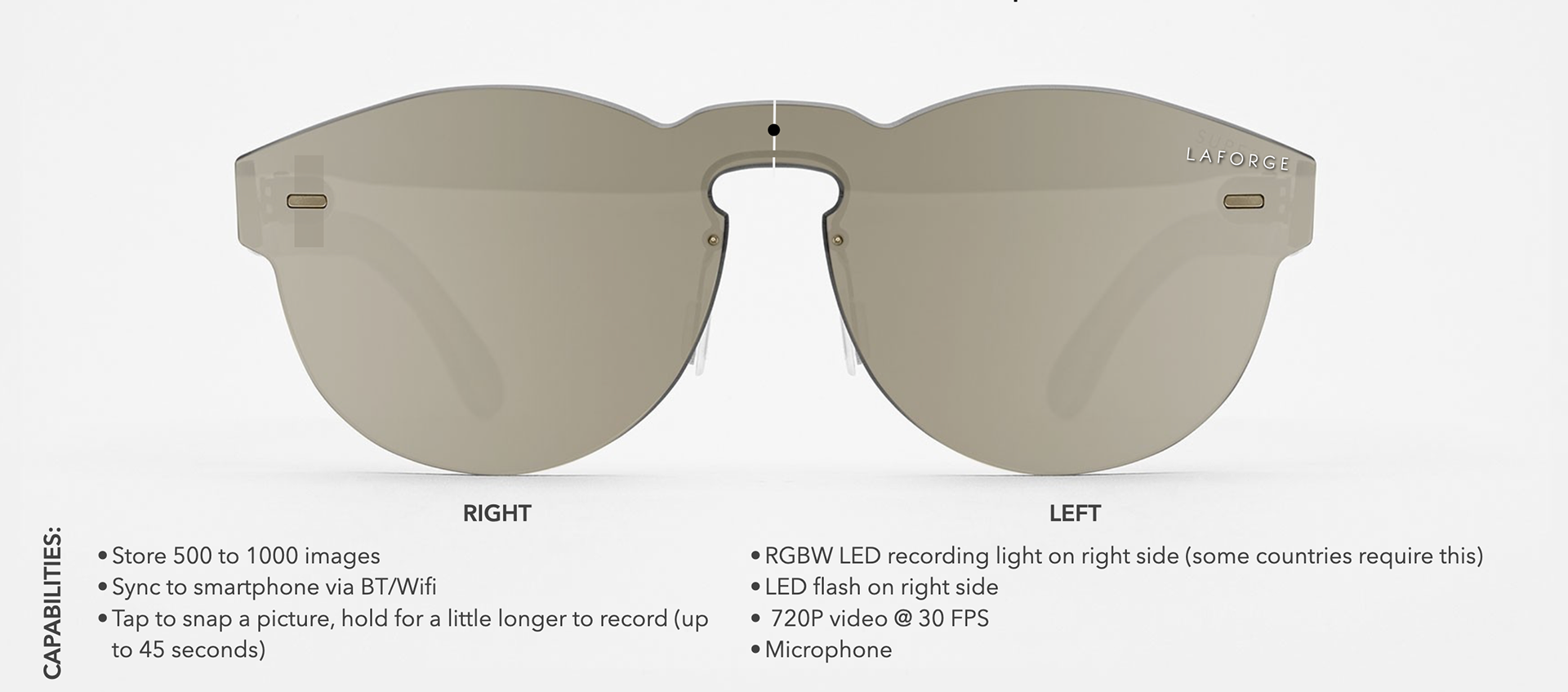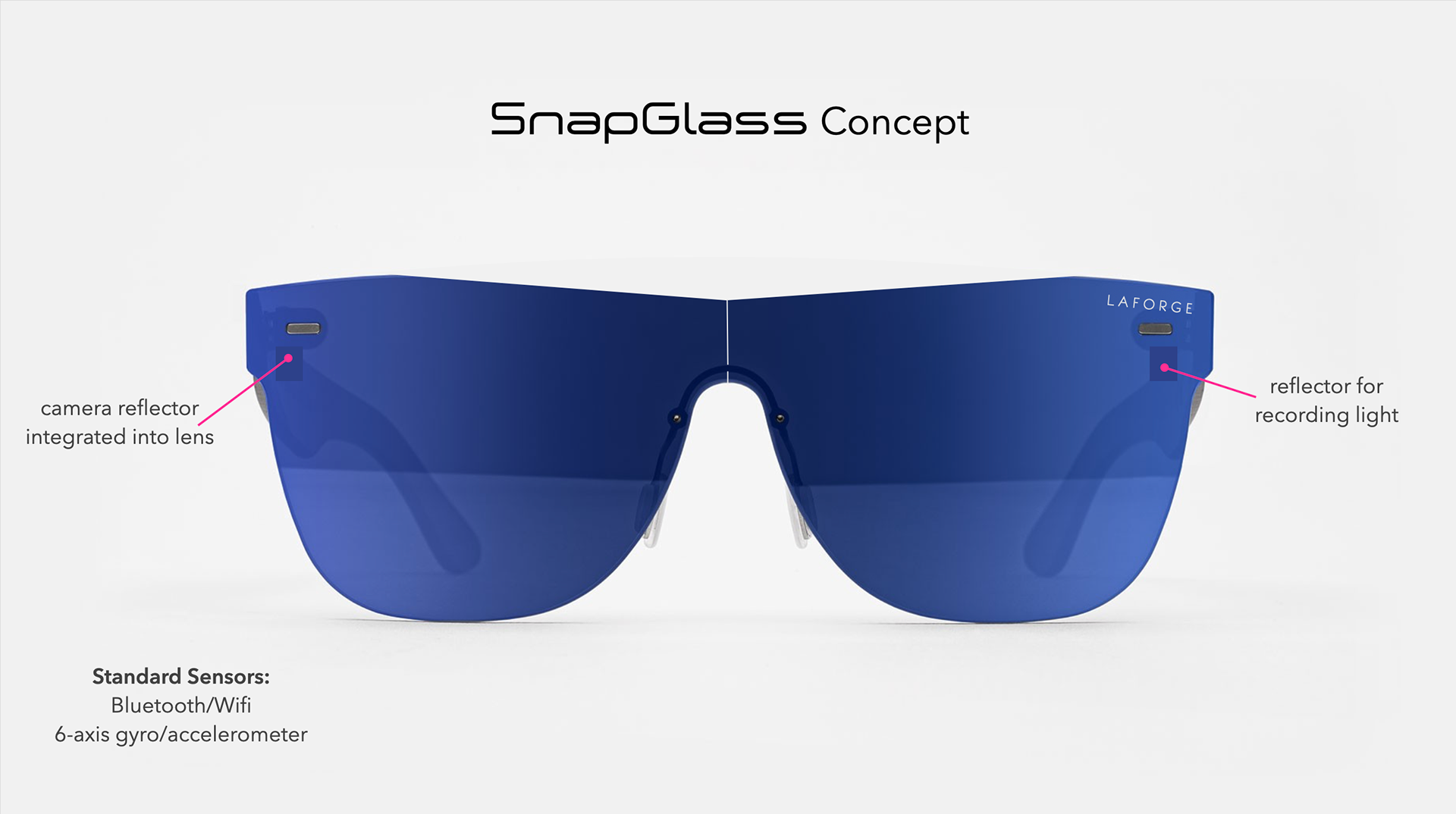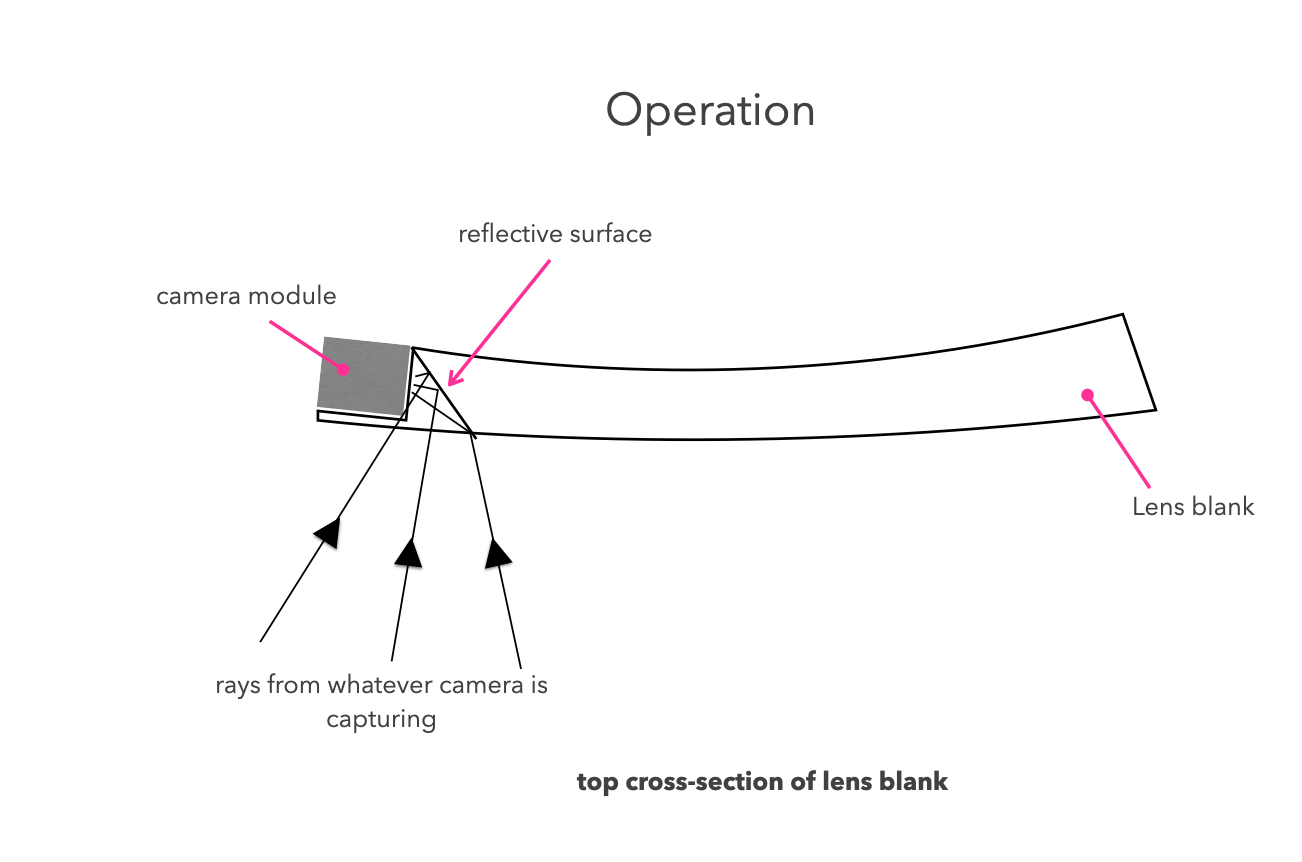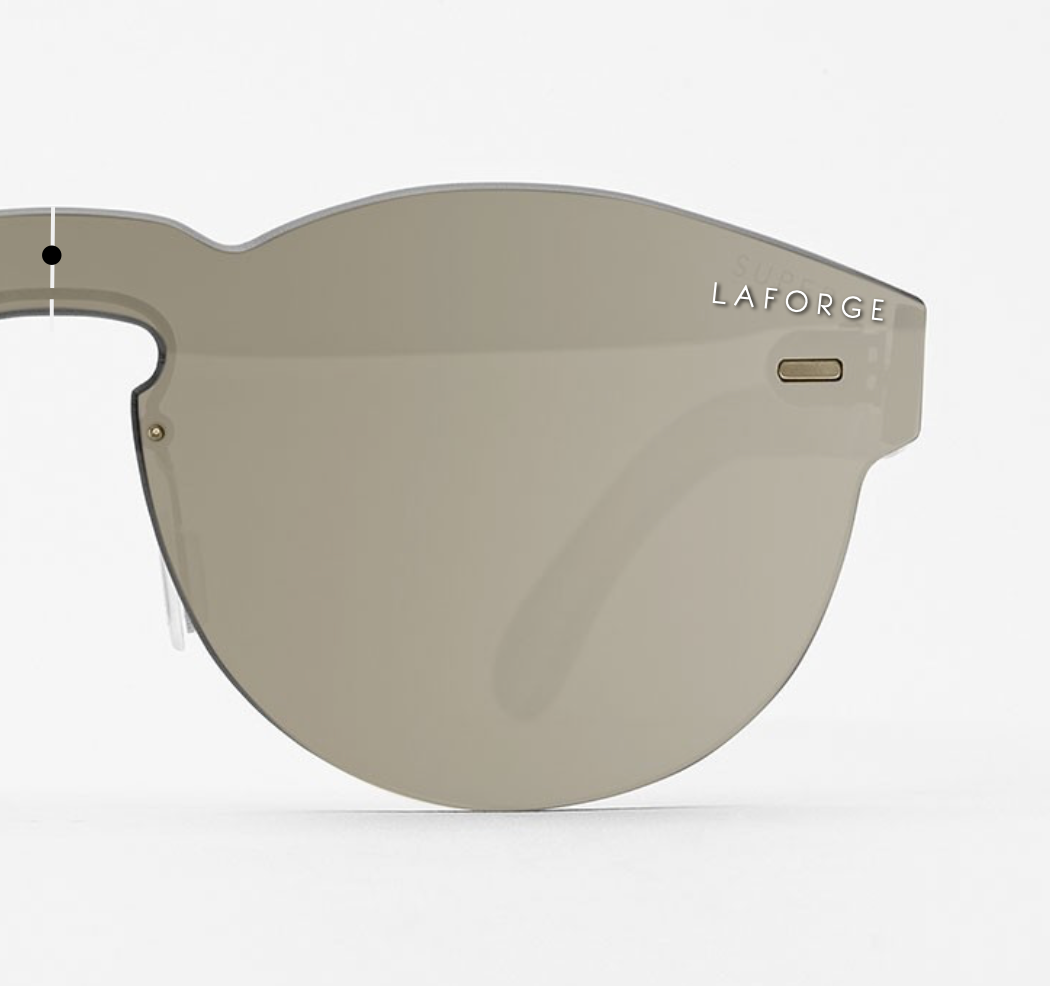Stylish Camera Eyewear
Capture, Learn, and Share
2017-2020
This project integrates cutting-edge camera technology into a sleek, everyday frame, allowing users to naturally capture moments and explore their surroundings. With a focus on intuitive design and AI-driven assistance, the eyewear opens up new possibilities for hands-free content creation while maintaining a stylish and unobtrusive look.
Mission
Empower people to see, learn, and share more—without compromising style or comfort. This camera eyewear uses advanced AI and user-friendly controls to enhance everyday experiences, from recognizing faces to capturing spontaneous moments, all in a design that fits seamlessly into daily life.
Addressing Market Gaps
• A Smarter Alternative to Snap’s Spectacles: While other camera glasses struggled with clunky designs and limited functionality, this product offered a refined balance of style, functionality, and user-centered design. Unlike its competitors, the eyewear maintains a sleek, classic look while offering advanced recording capabilities.
• Bringing Value to Everyday Use: The product is designed for everyday wear—users can record their adventures, navigate social settings, and explore new environments with ease. Its discreet design makes it ideal for content creators, travelers, and anyone looking to share their perspective without interrupting their flow.
• Bringing Value to Everyday Use: The product is designed for everyday wear—users can record their adventures, navigate social settings, and explore new environments with ease. Its discreet design makes it ideal for content creators, travelers, and anyone looking to share their perspective without interrupting their flow.
Features & Design
• Intuitive Capture Methods: The eyewear's camera can be activated in two ways. Users can press a dedicated button, or use a natural gesture—making a rectangle with their hands by forming an "L" with their thumb and index finger on each hand. This gesture automatically zooms and crops the view, making image capture intuitive without needing voice commands, which could be socially intrusive.
• The "Joker" Button: A customizable feature that allows wearers to activate any AI function they choose, tailoring the eyewear’s capabilities to their needs. Users can configure the "Joker" button for tasks like identifying people by searching through social media profiles, recognizing plants based on their shape, or using APIs like Shazam to recognize songs. This flexibility transforms the eyewear into a powerful, adaptable AI assistant..
• Manual Control for Privacy and Battery Life: By keeping advanced features manual, the eyewear balances processing power needs with privacy concerns. This approach ensured a longer battery life while allowing users to maintain control over when AI features were used, laying the groundwork for best practices in future technology.
• The "Joker" Button: A customizable feature that allows wearers to activate any AI function they choose, tailoring the eyewear’s capabilities to their needs. Users can configure the "Joker" button for tasks like identifying people by searching through social media profiles, recognizing plants based on their shape, or using APIs like Shazam to recognize songs. This flexibility transforms the eyewear into a powerful, adaptable AI assistant..
• Manual Control for Privacy and Battery Life: By keeping advanced features manual, the eyewear balances processing power needs with privacy concerns. This approach ensured a longer battery life while allowing users to maintain control over when AI features were used, laying the groundwork for best practices in future technology.
Technical Leadership
• Driving the Architecture: I led the system architecture and specifications, placing electronics in the left temple, the battery in the right, and positioning a camera sensor in the right frame end-piece to capture images using our lens with built-in camera tech. The design maintained a sleek profile while integrating complex components.
• Streamlined Production for Market Readiness: Collaborating with manufacturing partners, I designed a multi-step casting process that enabled easy integration into existing production lines. By aligning with familiar materials and processes, I made it easier for manufacturers to scale production and reduce time to market.
• Minimalist Design Philosophy: I pushed for a rimless design to demonstrate to eyewear designers how minimal yet powerful the product could be. The result was a frame that weighed less than conventional plastic and acetate frames, despite the addition of electronics.
• Streamlined Production for Market Readiness: Collaborating with manufacturing partners, I designed a multi-step casting process that enabled easy integration into existing production lines. By aligning with familiar materials and processes, I made it easier for manufacturers to scale production and reduce time to market.
• Minimalist Design Philosophy: I pushed for a rimless design to demonstrate to eyewear designers how minimal yet powerful the product could be. The result was a frame that weighed less than conventional plastic and acetate frames, despite the addition of electronics.
Impact
• Expanding Use Cases Beyond Competitors: This eyewear product isn’t just about capturing moments—it’s about enhancing how users interact with their environment. From nature walks to networking events, it enables users to capture the world around them seamlessly and share it effortlessly.
• Built Around a Proven Lens Technology: The core lens technology, initially a validation tool for testing suppliers, became the foundation for the stylish camera eyewear. This pivot allowed me to turn a testing component into a full-fledged product, shortening the development timeline and accelerating market entry.
• Setting the Stage for Future Technology: Limiting AI features to manual activation provided a controlled way to gather user data and refine best practices for privacy. This strategy ensured the product could evolve with user needs while maintaining trust and transparency.
• Built Around a Proven Lens Technology: The core lens technology, initially a validation tool for testing suppliers, became the foundation for the stylish camera eyewear. This pivot allowed me to turn a testing component into a full-fledged product, shortening the development timeline and accelerating market entry.
• Setting the Stage for Future Technology: Limiting AI features to manual activation provided a controlled way to gather user data and refine best practices for privacy. This strategy ensured the product could evolve with user needs while maintaining trust and transparency.
